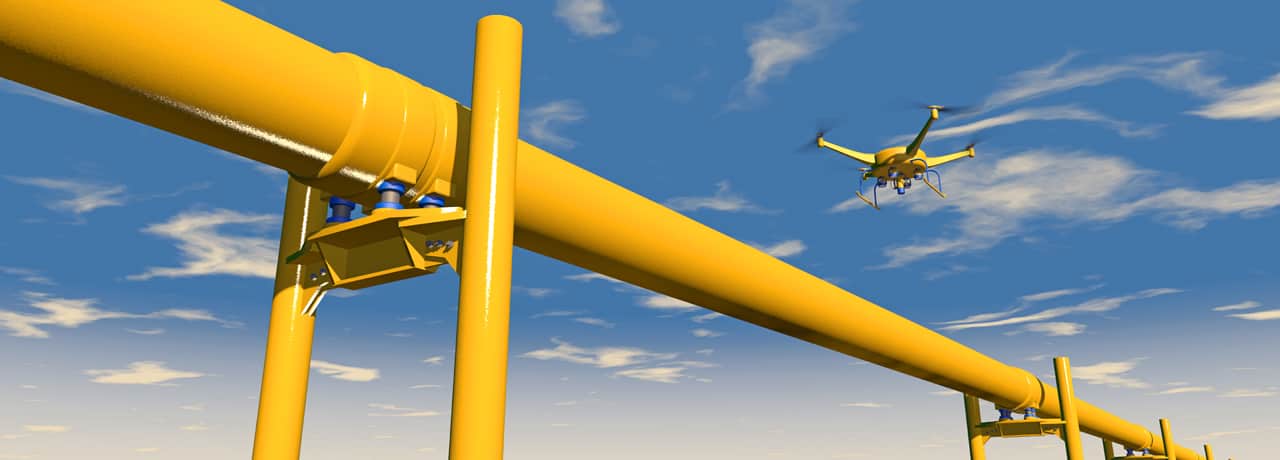November 27, 2018

Related Blogs:
Sign up for blog updates
Get innovation delivered to your inbox. Sign up for our blog and stay on top of the very latest from Semtech (formerly Sierra Wireless).
November 27, 2018

However, while these Industrial IoT drone applications are exciting, they all require a person to be guiding and monitoring the drone constantly while it is in the air. In most cases, governments also require that that drone operators keep the drone in their line of sight while they fly it. Fully autonomous drones, or at least drones that can be safely operated Beyond Visual Line of Sight (BVLOS), would open up a wide range of other new Industrial IoT applications, including the delivery of medical supplies and other packages during disasters or for business purposes, traffic management, and personal transportation. Yet several barriers currently prevent the use of autonomous or BVLOS drones for Industrial IoT applications, including extensive battery usage that limits drone flight times, the lack of drone traffic management systems, and the need for updated drone flight regulations. Until these barriers are overcome, we are unlikely to see many BVLOS or autonomous drones take to the sky. So how soon might these barriers be addressed? In some cases, sooner than you think.
Many Industrial IoT autonomous or BVLOS drone applications, such as those noted above, require drones to stay airborne for long periods of time. This makes it challenging and expensive to integrate batteries that can store the energy required to keep these drones operational for these types of use cases. Heavy drone components, especially the battery itself, accelerate battery drain, while the energy used to constantly communicate real-time location or other data also limit drone operating times. However, we are making rapid progress in address these problems.
Battery technologies continue to improve, enabling drone designers to pack more power into a drone without increasing its weight. Some new drones also integrate solar cells into their design – providing another way to keep autonomous drones in flight for hours. In addition, new low power wide area (LPWA) technologies reduce the amount of power used to continually transmit cellular location data, which must be combined with GPS data to more precisely identify the exact location of a drone. LPWA technologies can also reduce the power used to transmit other sensor data from the drone to the ground. The combination of improved battery design, solar power and LPWA technology will enable the cost-effective deployment of drones that can stay airborne for many hours, enabling more autonomous and BVLOS drone applications.
For autonomous and BVLOS drones to be deployed commercially, it is essential to have in place traffic management systems capable of preventing drones from entering no fly zones or from colliding with other drones, airplanes and other obstacles, such as buildings, power lines and cars, that drones may encounter as they are flying.
Among other capabilities, these traffic management systems need to be able to:
Though complicated, these challenges are also being addressed. New Device to Cloud (D2C) IoT platforms facilitate the integration of artificial intelligence (AI) platforms and outside data sources into traffic management systems, enabling safer autonomous and BVLOS monitoring and control of drones. For example, SqwaQ is currently building a global data communications network on which all drones can fly safely.
While such systems still need careful testing, D2C platforms will enable the development of traffic management systems that minimize the chances of a drone collisions.
In the U.S., the Federal Aviation Administration (FAA) currently requires drone operators to maintain a line of sight with their drones. The agency has received hundreds of requests for waivers to allow for autonomous or BVLOS drone tests but has accepted only a handful of them. Until this requirement is eliminated, it will be impossible to deploy the type of Industrial IoT autonomous or BVLOS drone applications described above.
It is understandable that the FAA is being careful regarding the use of autonomous and BVLOS drones, as without the proper controls or processes in place they could threaten the safety of people and property. Still, we are seeing exciting progress here too.
Examples of autonomous and BVLOS drone initiatives currently underway include:
The FAA also has the Unmanned Aircraft System (UAS) Integration Pilot Program (IPP), which provides an opportunity for state, local and tribal governments to partner with the private sector to accelerate the safe integration of BVLOS drones. The program should help the FAA and the U.S. Department of Transportation (USDOT) develop new rules to ensure safety while accelerating the adoption of drone use cases.
There’s no doubt that the challenges involved in rolling out safe autonomous and BVLOS drone applications will be overcome and that drones will play a critical role in business, industry, public safety and eventually personal transport.
This means the time is now to begin exploring the business opportunities autonomous drones and the IoT will introduce, from the continued development of drone technology and traffic management systems to applications that take advantage of drones to do something better, faster or cheaper. As you do so, remember to Start with Sierra to learn more about the technologies that will enable you to re-imagine a world that benefits from autonomous and BVLOS drones.
Get innovation delivered to your inbox. Sign up for our blog and stay on top of the very latest from Semtech (formerly Sierra Wireless).